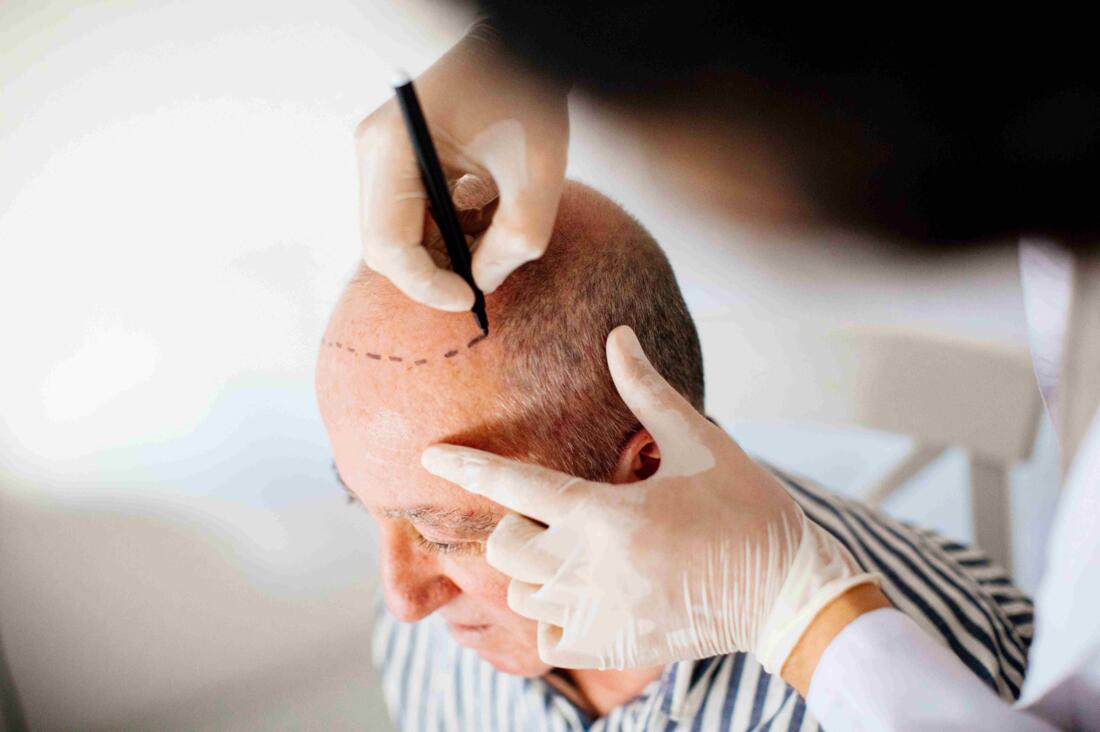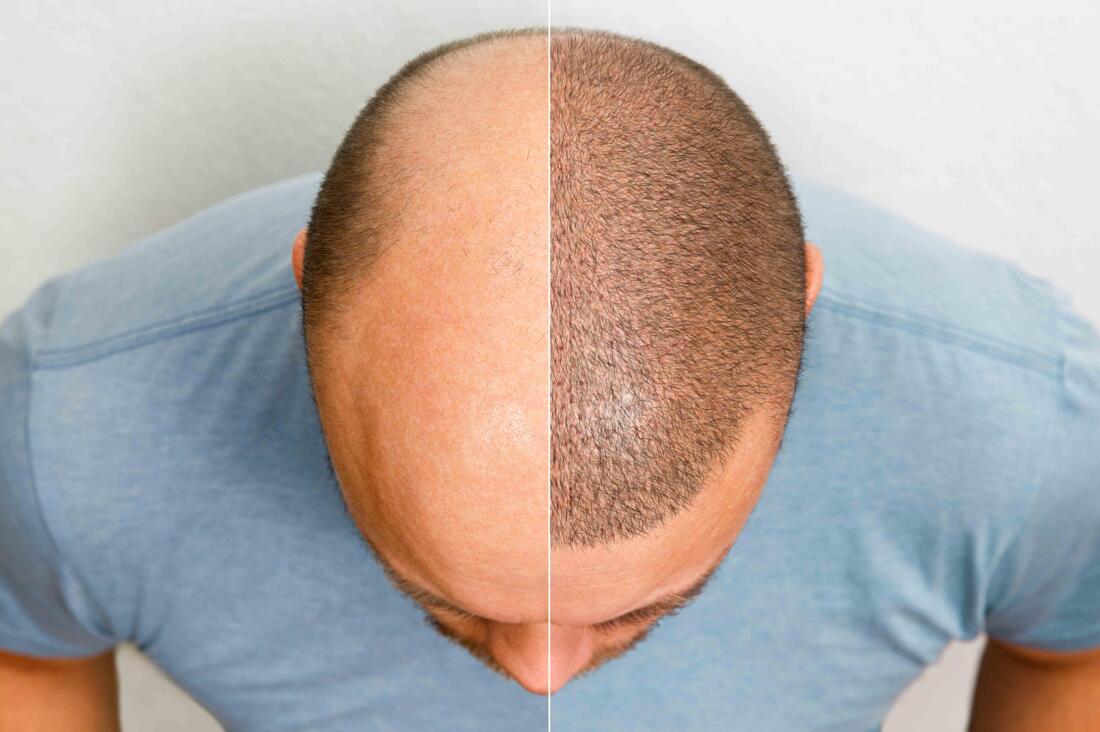Experiencing hair loss can be upsetting as it impacts both the scalp's appearance and a person's self-confidence. Luckily, advancements in hair restoration provide renewed hope for individuals dealing with this issue.
Overcoming Hair Loss
The most up-to-date methods in hair transplant are now more advanced and efficient than ever, producing results that appear natural with very little discomfort. The most commonly used techniques include Follicular Unit Extraction (FUE) and Follicular Unit Transplantation (FUT), each offering its own benefits. These procedures focus on accurately removing and implanting hair follicles to ensure the new hair growth appears as natural as can be.

FUE Method
The FUE technique has become increasingly popular because it is minimally invasive and leaves no linear scar.
During this procedure, hair follicles are taken directly from the scalp without using a scalpel or requiring stitches, leading to a faster recovery and less discomfort after surgery.
The precision of the FUE method enables the hair follicles to be implanted in a manner that mirrors the natural growth pattern, making it hard to differentiate from the original hair.
Moreover, improvements in robotic technology have enhanced the accuracy and effectiveness of the FUE procedure.

FUT Method
Alternatively, FUT, also called strip surgery, involves removing a small section of tissue from the back of the scalp where hair is less likely to thin. The follicles are then extracted and transferred to areas experiencing hair loss.
While this approach may result in a linear scar, it is usually obscured by the patient's existing hair and may be a more economical choice for those needing numerous grafts.
Both FUE and FUT boast high success rates and can be customized to address each individual's specific desires and requirements.
Thanks to these advanced methods, people dealing with hair loss have a better chance of regaining a full and natural-looking head of hair, which not only replenishes their locks but also boosts their self-assurance.
Understanding the Causes of Hair Loss
Hair loss can stem from a variety of factors, including genetics, hormonal changes, medical conditions, and environmental influences. One of the leading causes is androgenetic alopecia, commonly known as male or female pattern baldness, which is genetically inherited. Additionally, hormonal imbalances, particularly involving testosterone and dihydrotestosterone (DHT), can contribute to hair thinning. Other potential causes include stress, nutritional deficiencies, and certain medications. By understanding these underlying factors, individuals can take proactive steps toward prevention and treatment, thus addressing hair loss more effectively.
The Role of Nutrition in Hair Health
Proper nutrition plays a pivotal role in maintaining healthy hair and preventing hair loss. Essential nutrients such as vitamins A, C, D, E, zinc, iron, and omega-3 fatty acids are crucial for hair growth and overall scalp health. A balanced diet rich in fruits, vegetables, whole grains, and lean proteins can provide the necessary building blocks for strong hair. Moreover, specific foods, such as spinach, fatty fish, and nuts, are known to enhance hair vitality. Individuals experiencing hair loss should consider evaluating their dietary habits to ensure they are nourishing their bodies adequately, promoting not just hair health but overall well-being.
Exploring Non-Surgical Hair Restoration Options
In addition to surgical options, there are several non-surgical treatments available for hair restoration that individuals can explore. Low-level laser therapy (LLLT) is one such option that uses light energy to stimulate hair follicles and promote hair growth. Topical treatments like minoxidil are also popular and can be effective in slowing hair loss and encouraging regrowth for some users. Furthermore, platelet-rich plasma (PRP) therapy has gained attention for its ability to harness the body’s own healing properties to rejuvenate hair follicles. Each of these options provides a different approach to tackling hair loss, allowing individuals to find a solution that best fits their needs.
Post-Procedure Care for Optimal Results
After undergoing a hair transplant, it is crucial to follow specific post-procedure care guidelines to ensure optimal results and promote healing. Patients are typically advised to avoid strenuous activity and direct sun exposure for a few weeks following the procedure. Proper cleansing of the scalp and gentle handling of the transplanted hair are essential to avoid complications. Additionally, using prescribed medications to manage pain and prevent infection can significantly enhance recovery. Regular follow-up appointments with the hair restoration specialist will also help monitor progress and address any concerns, ultimately leading to successful outcomes.
Setting Realistic Expectations for Hair Restoration
Understanding what to expect from hair restoration treatments is vital for individuals considering these procedures. It is essential to recognize that results may take time, with significant improvements often becoming visible only after several months. Factors such as the individual's hair type, the extent of hair loss, and adherence to post-procedure care all influence the outcome. Furthermore, while many people achieve satisfactory results, it is important to have realistic expectations and a clear understanding of the limitations of each treatment option. Consulting with a qualified specialist can provide valuable insights into potential results, ensuring informed decision-making.
Maintaining Hair Health Post-Restoration
Once individuals have undergone hair restoration, maintaining hair health becomes an ongoing commitment. Regular trims, the right hair care products, and a healthy lifestyle are essential for preserving the results of the procedure. Gentle shampoos and conditioners free from sulfates and parabens can help maintain hair integrity, while avoiding excessive heat styling will prevent damage. Additionally, ongoing nutritional support and hydration play a crucial role in sustaining hair vitality. For those who have experienced hair loss, establishing a consistent hair care routine and making healthy lifestyle choices will contribute to the longevity and appearance of their restored hair.
AI-Assisted Content Disclaimer
This article was created with AI assistance and reviewed by a human for accuracy and clarity.